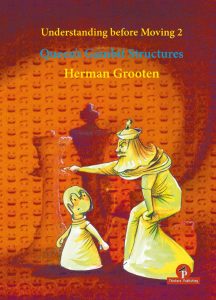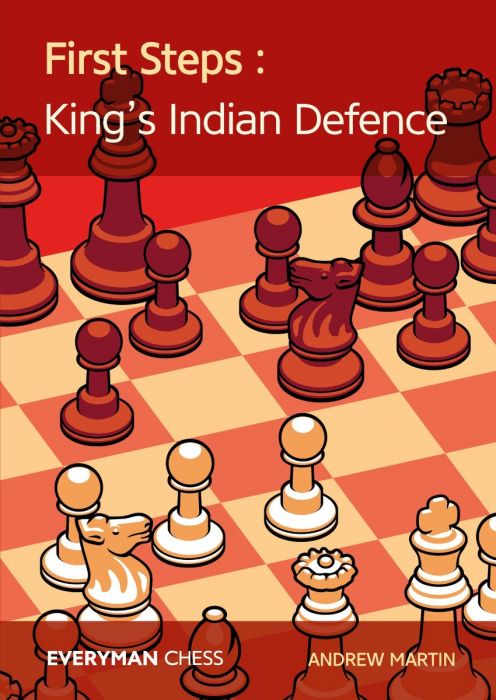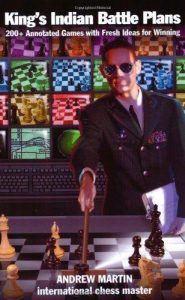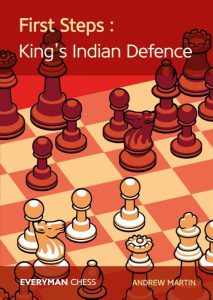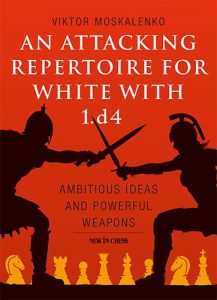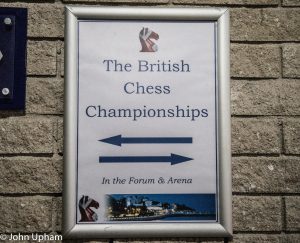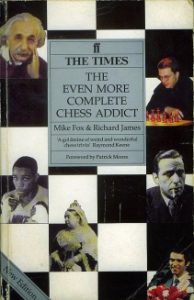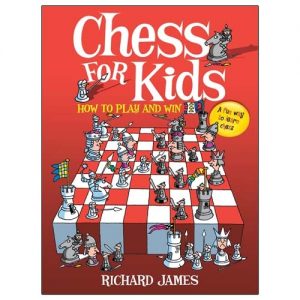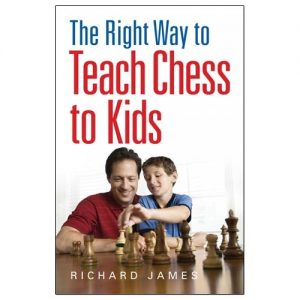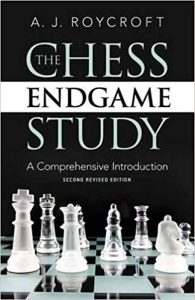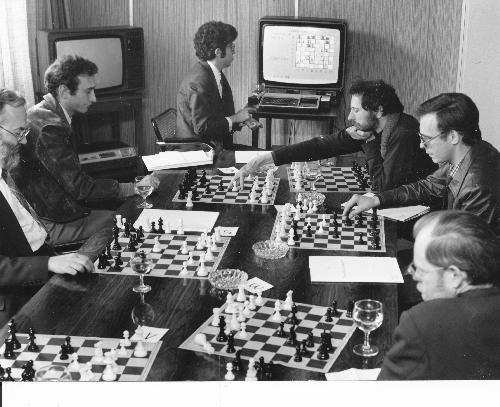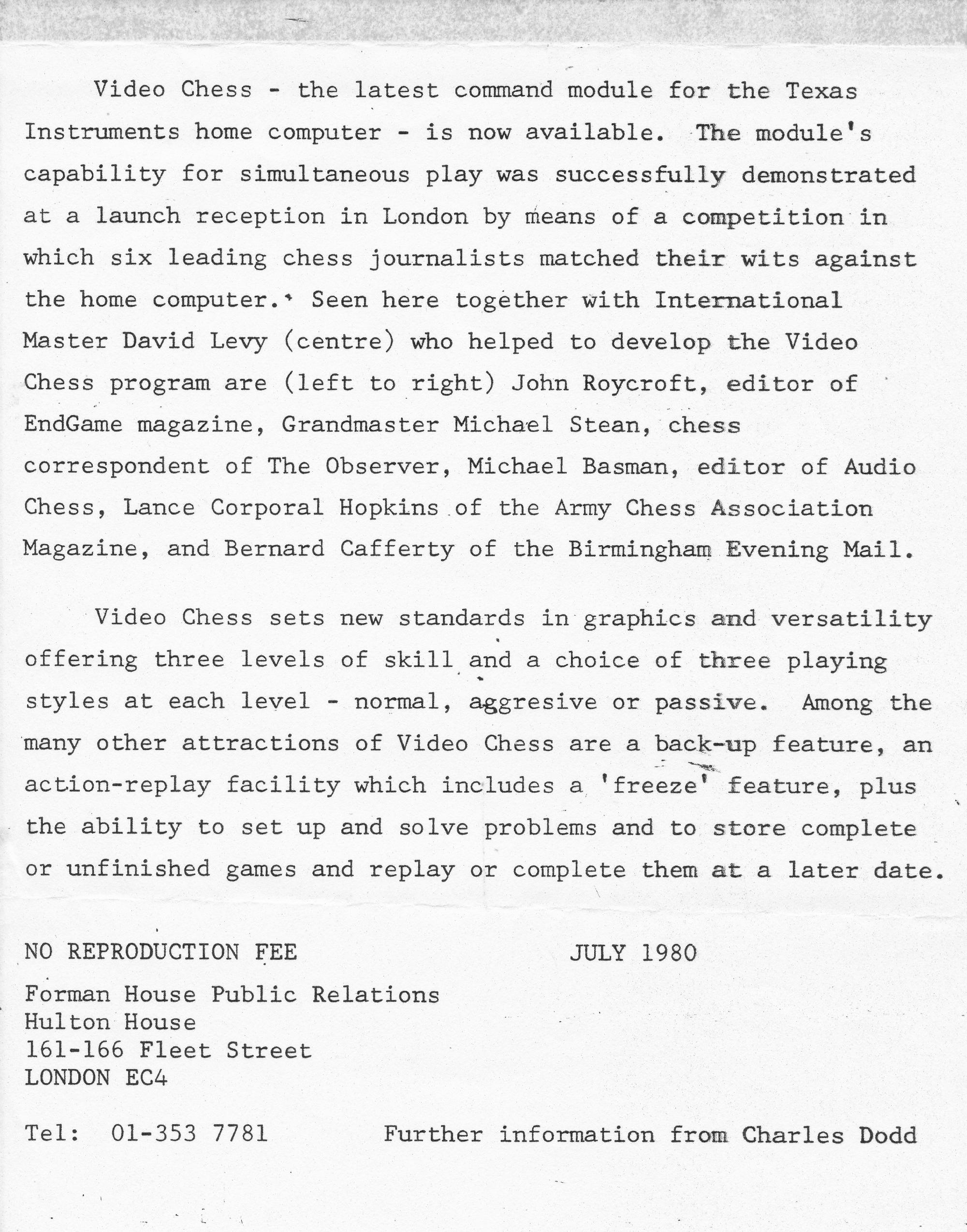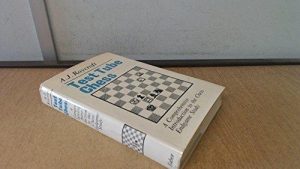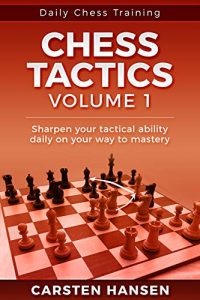
Cartsen Hansen is a Danish FIDE Master, FIDE Trainer and author of twenty-eight chess books on all phases of the game. He is a columnist for American Chess Magazine and Shakbladet.

Chess Tactics is a volume in the series Daily Chess Training the content for which is largely drawn from the authors spaces on various social media platforms such as Facebook, Twitter and Instagram.
The book is self-published and our copy was printed by Amazon Fulfillment which we believe is a low cost method to get books printed with lower volume print runs than you might associate with a so-called main stream publisher. Being a paperback that is fairly thick compared with its other dimensions, it means weights are required to keep the book open hands-free style, unless you want to break the spine. Maybe no other review will mention this but the convenience of reading the book makes a difference for us. It should be noted that a Kindle version is also marketed for those who prefer an eBook format. The printing is fairly clear on off-white paper. What stood out to us immediately was the murkiness / clarity of the diagrams. To be fair to the author we did report this and he has taken this up with his printers.
The main content is divided into seven chapters which have the same rough format of sixteen sets of exercises with four exercises (on average) per set.
For each individual exercise there is a diagram of the starting position, a rating in the forms of asterisk symbols from 1 – 5 where * is straightforward (but not trivial) and ***** means “industrial strength” difficulty. Under the rating is an indicator of who is to move and finally a hint such as
hint : Surprising Consequences to a simple plan.
It is possible to cover up the hint with something handy such as a beer mat (!) should you chose to avoid it.
Following each group of say four exercises there is a solution which usually includes in-depth analysis plus details of the provenance of the game itself.
We could be wrong but every one of the 404 exercises appears to be from 2018 tournament, league or match practice. The author deserves to be congratulated for this aspect alone and this means is it not likely you will have remembered any of the exercises from elsewhere : respect ! Of course, 2018 was an olympiad year which must have helped enormously especially in terms of large disparity in playing strength of the two players.
The overall ethos of the chosen exercises appears to be tactics / combinations that occur in typical games played by mortals leading to winning or large edge positions. In other words they are very pragmatic choices of “meat & potatoes” strong moves rather than jaw-dropping moves that feature in tactics books time and time again.
The author makes it clear that he values feedback and he provides various ways to make contact via his email address and various social media locations. We received an answer to a query within the same day.
Let us examine some examples :
Set 49
Exercises to Set 49
49.1)
**
White to move
Hint : Making room for the right strike
and the solution is :
13.d5!
This clever move takes aim at a surprising piece.
13…Bxd5 14.Nxd6+!
Of course, not 14.Qxd5?? Bb4+.
14…Qxd6 15. Qe3+!
Yes, It is the rook on a7 that’s the target !
15…Kd7 16.Qxa7
Black could have resigned here but dragged the game on to move 20 against her much lower rated opponent.
16…Nc6 17.Qe3 Re8 18.Qd2 Bxf3 19.gxf3 Nd4 20.Qxd4 1-0
A.Avramidhou (2260) – V. Gunina (2528)
Chess Olympiad (women) (Batumi) 2018
and here is a one star problem :
10.3)
*
White to move
Hint : Exploit the many weaknesses in Black’s camp.
and he solution is
16.Bxe6! Nd5
Or 16…fx6 17.Qxe6+ Qe7 18. Qxc6+ Kf7 19.Ne5+
17.Be5 Also 17.Ne5 wins. After 17.Be5 fxe6 18.Bxg7 Rh7 19.Qxe6+ Ne7 20.Qf6, Black is toast.
1-0
C. Bauer(2644) – M. Apicella (2501) Cannes (rapid) 2018.
and, finally an “industrial strength” exercise :
76.2)
*****
White to move
Hint : Pursuing your dreams often comes at the cost of squashing somebody else’s aspirations
and the solution is :
28.d5!
This threatens Bxg7 followed by Qe7+ and game over for Black.
28…Nc3 29.Ba2!!
Without this move White has nothing – did you see it?
29…Qxa2 30.Bxc3 e5
Or 30…Bxc3 31.Qh7+ Kf8 32. Qxb7 and White is winning.
31.Bxe5 Bxe5 32.Qh7+ Kf8 33.Nxe5 White is, of course, completely winning. 33…Bxd5+ 34.Kg1 Bf7 35.Qh8+ Ke7 36.Nc6+ 1-0
M. Parligras(2645) – S.Grigoriants (2543) Hungarian Team Ch. 2018.
There follows an Index of Players and two of these players (Stamy and Sindarov) have five games referenced each. The bulk of the players are not therefore super elite players but mortals.
In summary, this selection of 404 graded exercises covers all of the most common tactical themes plus some rarely encountered ones from modern practice. The commentary for each exercise is detailed enough. The exercises are not grouped according to any particular theme so you are not “expecting something” : you actually have to work it out from scratch in keeping with a real game.
We’d like to see clear diagrams but maybe our reviewer needs to visit Specsavers ! Overall this is good book, packed with original material delivered with a unique style. It will improve your chess ! We look forward to Volume 2….
John Upham, Cove, Hampshire, 29th August, 2019

Book Details :
- paperback : 329 pages
- Publisher: Carsten Chess (April 2019)
- Language: English
- ISBN-10: 1790316308
- ISBN-13: 978-1790316304
- Product Dimensions: 6 x 0.8 x 9 inches
Official web site of Carsten Chess



